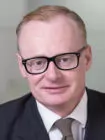Regulators fined Bank of America, Citibank, HSBC, JPMorgan Chase, The Royal Bank of Scotland and UBS $4.3 billion (£2.8 billion) for their conduct on FX markets between January 2008 and October 2013.
The Foreign Exchange ("FX") market is the largest financial market in the world, with a daily average turnover of $5.3 trillion, 40% of which is transacted in London. Much of this activity stems from financial institutions repatriating global currency holdings through FX spot trading.
Currency benchmark rates
FX derivative transactions are most frequently based on the WM/Reuters "Closing Spot Rates". For the most widely traded currencies in the world, these rates are calculated, in part, by using the median of currency trades in a minute‐long period starting 30 seconds before 4:00pm London me. Banks often guarantee to clients that transactions on the FX market will be done at the WM/ Reuters Closing Spot Rates, as a means of valuing global currency holdings and indexes that span multiple currencies.
Manipulation of the FX market
Regulators in eight countries have launched investigations. These investigations have uncovered evidence suggesting that, since at least 2008, banks have inappropriately shared market‐sensitive information with one another and manipulated WM/Reuters Closing Spot Rates. FX traders, who typically communicate via instant messages, suspiciously referred to themselves as "The Cartel" among other names.
Regulatory fines
On November 12, 2014, the U.S., British and Swiss regulators imposed total fines of $3.3 billion (£2 billion) on Citibank, HSBC, JPMorgan Chase, The Royal Bank of Scotland and UBS for their conduct on FX markets between January 2008 and October 2013. The regulators' investigations focused on G10 spot FX currency rates, which comprise U.S. Dollar, Euro, British Pound among other currencies.
Ongoing EU public proceedings
On January 22, 2015, EU antitrust officials announced that the European Commission was close to ending its FX probe into potentially anticompetitive conduct. An infringement or settlement decision would immediately establish the banks' liability towards victims of the manipulation in Europe. Given London's status as Europe's leading FX market, the English courts are the obvious forum in which to bring global FX damages claims.
Ongoing U.S. civil litigation
Numerous actions were filed in the United States seeking to recover for misconduct. On February 13, 2014, the Court consolidated these cases into a single action: In re Foreign Exchange Benchmark Rates Antitrust Litigation, 13‐cv‐7789. Hausfeld LLP has been appointed co‐lead counsel in this matter. In early 2015, plaintiffs reached settlements resolving U.S.‐based claims with JPMorgan and UBS for $99.5 and $135 million, respectively. Both JPMorgan and UBS also agreed to cooperate in the case against the remaining Defendants in the action.
Impact on financial institutions
Various economists, firms, and other financial experts have carried out preliminary studies of the potential losses benchmark users may have suffered from the manipulation of the WM/Reuters raters. The manipulation significantly impacted users of FX spot transactions. Any entity that engaged in spot FX transactions directly or indirectly with one or more of the colluding banks between 2008 and 2013 may have a claim for damages.
Next steps
Any damage analysis will need to address, among other things, whether the entity traded G10 currencies in the spot FX market, including trades based on the WM/Reuters Closing Spot Rates, and will involve an analysis of the individual FX transactions that were conducted.
Experts cite the following techniques which traders allegedly used to manipulate currency rates:
- Front running: traders agreed that when they received customer orders, they would "front run" on customer information as a group, and then trade their own positions before executing their customers' market‐moving trades;
- Banging the close: traders broke up large customer orders into small trades and concentrated the trades in the moments before and during the 60‐second fixing window in order to spike the published rates up or down; and
- Painting the screen: traders placed phony orders with one another to create the illusion of trading activity in a given direction in order to move rates prior to the fixing window. After the WM/Reuters Closing Spots Rates were calculated, the colluding banks reversed those trades.
"The settlement agreement with
UBS provides significant monetary
and non‐monetary benefits to investors ... that were
harmed
by the defendants' anti-competitive practices. UBS's
cooperation ...
will help the plaintiffs build their case against the other
defendants."
Michael D. Hausfeld
Chairman
View the Hausfeld Press Release: www.hausfeld.com/news/us/hausfeld‐announces‐135‐million‐settlement
The content of this article is intended to provide a general guide to the subject matter. Specialist advice should be sought about your specific circumstances.


